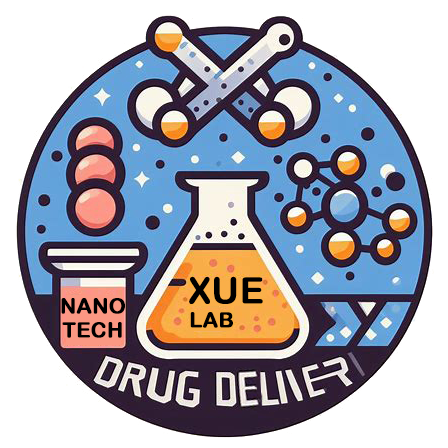Haijing's work has been published online at ACS Nano, Cheers
曲海晶博士的工作发表在NI期刊《ACS Nano》上,IF=15.8,祝贺海晶!
链接:https://pubs.acs.org/doi/10.1021/acsnano.4c08157
感谢主编和审稿人的认可!


内容简介:我们介绍了一种名为 mAOI NP 的仿生纳米调节剂用于治疗脓毒症相关脑病(SAE),它能够特异性地靶向炎症部位,并同时调节氧化和炎症应激。mAOI NP 由金属配位的多酚抗氧化剂(单宁酸)和黄酮类抗氧化剂(槲皮素)构建,并涂覆巨噬细胞膜以增强药代动力学和实现 SAE 靶向。在盲肠结扎穿刺(CLP)诱导的重症脓毒症模型中,mAOI NP 通过清除活性氧、修复线粒体损伤和激活 Nrf2/HO-1 信号通路有效地减轻氧化应激;同时将 M1 巨噬细胞或小胶质细胞极化为抗炎的 M2 亚型。mAOI NP 强效抑制脓毒症进展,将总体存活率从 25% 延长到 66%,并增强 SAE 小鼠的学习和记忆能力。进一步蛋白质组学分析揭示,mAOI NP 调节与学习和记忆形成相关的神经发育过程,同时对与 SAE 病理相关的脑组织反应发挥抗炎和抗氧化作用。这项研究为改善患者预后并为这种脓毒症严重并发症的治疗带来新的潜力。
原文摘要:Sepsis-associated encephalopathy (SAE) is a devastating complication of sepsis, affecting approximately 70% of patients with sepsis in intensive care units (ICU). Although the pathophysiological mechanisms remain elusive, sepsis is typically accompanied by systemic inflammatory response syndrome (SIRS) and hyper-oxidative conditions. Here, we introduce a biomimetic nanomodulator (mAOI NP) that specifically targets inflammation site and simultaneously regulates oxidative and inflammatory stresses. mAOI NPs are constructed using metal-coordinated polyphenolic antioxidants (tannic acid) and flavonoid quercetin, which are then coated with macrophage membrane to enhance pharmacokinetics and enable SAE targeting. In a cecal ligation and puncture (CLP)-induced severe sepsis model, mAOI NPs effectively mitigate oxidative stress by purging reactive oxygen species, repairing mitochondrial damage and activating the Nrf2/HO-1 signaling pathway; while polarizing M1 macrophages or microglia toward anti-inflammatory M2 subtype. mAOI NPs potently inhibit sepsis progress, prolong overall survival from 25 to 66% and enhance learning and memory capabilities in SAE mice. Further proteomics analysis reveals that mAOI NPs modulate neurodevelopment processes related to learning and memory formation while also exerting anti-inflammatory and antioxidative effects on brain tissue responses associated with SAE pathology. This study offers significant potential for improving patient outcomes and revolutionizing the treatment landscape for this devastating complication of sepsis.
